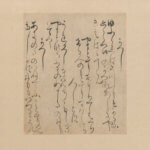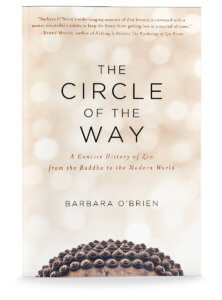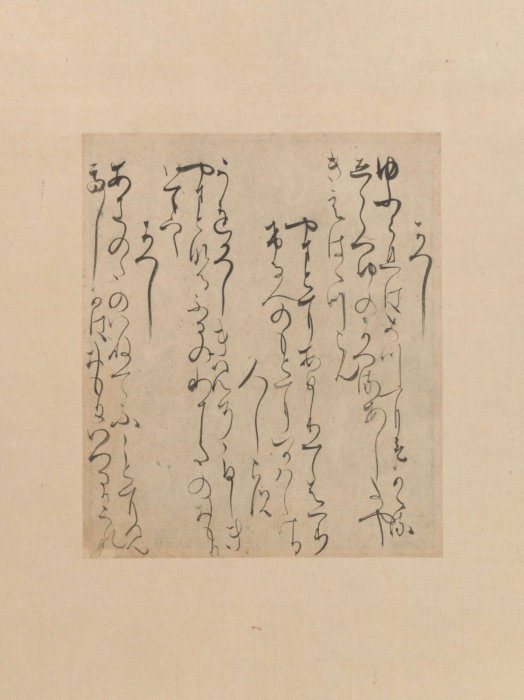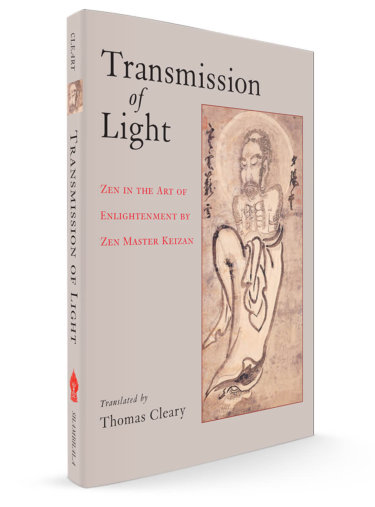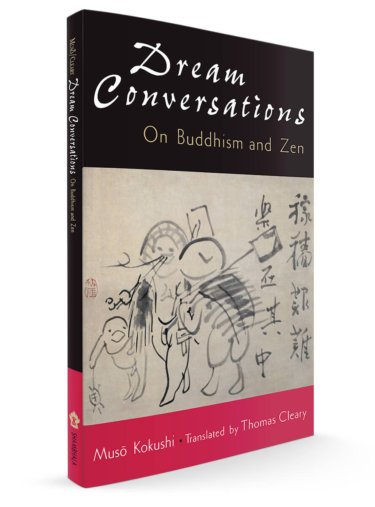
Three Poems from the “Later Collection of Japanese Poems” (Gosen wakashū), or “Shirakawa Fragment” (Shirakawa-gire) late 12th century, early Zen in Japan.
Traditionally attributed to monk Saigyō (1118-1190)
From the Met
Explore Zen Buddhism: A Reader's Guide to the Great Works
Overview
Chan in China
- The Works of the Chan and Zen Patriarchs
- The Works of Zen in the Tang Dynasty (618-907)
- The Works of Zen in the Song Dynasty (960 - 1279)
- The Great Koan Collections
Zen in Korea
Zen in Japan
> Early Zen in Japan
- Dogen: A Guide to His Works
- Rinzai Zen
- Hakuin Ekaku: A Reader's Guide
- The Samurai and Zen
- Zen in Japan up to the Meiji Restoration (Coming Soon)
Additional Resources
- The Heart Sutra: A Reader’s Guide
- Zen in the Modern World (Coming Soon)
- Foundational Sutras and Texts of Zen (Coming Soon)
- Zen and Tea
Buddhism reached Japan via Korea in the sixth century, but China, the source of the corpus of Zen literature, was also greatly influential in the development of Japanese Buddhism. Many of the great early Zen masters of Japan went to China for learning.
In The Circle of the Way, readers will learn about Buddhism's arrival and figures like Prince Shotoku (577–622), the Nara period in which the main temple of that city covered sixteen city blocks, and the Heian period during which Saicho (767–822) founded the Tendai school and Kukai (774–835) founded Shingon, and Eisai (1141–1215).
But everything changed in the thirteenth century with Dogen (1200–1253). So prolific and important was Dogen that he is profiled for twenty pages in The Circle of the Way, more than any other figure.
However, there were other important masters and works in in the wake of Dogen, and we highlight two of them here.
Transmission of Light: Zen in the Art of Enlightenment
A translation of the classic Denkoroku by Thomas Cleary illustrates how to arrive at the epiphanic Zen awakening known as satori.
The essential initiatory experience of Zen, satori is believed to open up the direct perception of things as they are. "Even if you sit until your seat breaks through, even if you persevere mindless of fatigue, even if you are a person of lofty deeds and pure behavior, if you haven't reached this realm of satori, you still can't get out of the prison of the world." Deliberately cultivated and employed to awaken the dormant potency of the mind, satori is said to be accessible to all people, transcending time, history, culture, race, gender, and personality.
Attributed to the thirteenth-century Zen Master Keizan (1268–1325), Transmission of Light is one of three essential koan texts used by Zen students. Techniques for reaching the enlightening experience of satori are revealed through fifty-three short tales about the awakenings of successive generations of masters, beginning with the twelfth-century Zen master Ejo, dharma heir to Dogen.
The translator's introduction establishes the context for Transmission of Light within the Zen canon and elucidates central themes of the work, including the essential idea that genuine satori "is not the end of Zen; it is more properly the true beginning."
Dream Conversations: On Buddhism and Zen
Dream Conversations is a collection of a renowned Japanese master's written replies to questions about the true nature of Zen. In short, simply worded teachings, Muso Kokushi (1275–1351), also known as Muso Soseki, exposes common misconceptions with unprecedented clarity, offering psychological insights designed to lead the reader into the depths of authentic Zen experience. These incisive teachings will be especially valuable for today's Zen students, as they struggle with their own confusion and misunderstandings about the true path of Zen.
This is also included in Classics of Buddhism and Zen, Volume III.

